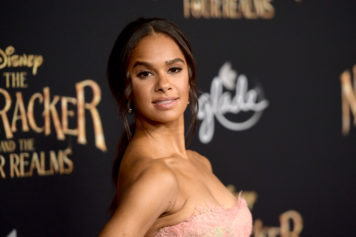
For its annual career issue, Pointe enlists Dance Theatre of Harlem’s Ashley Murphy, Cedar Lake Contemporary Ballet’s Ebony Williams and the American Ballet Theater’s Misty Copeland to discuss an ongoing problem in ballet communities: lack of diversity.
This isn’t a new situation and neither are attempts to call greater attention to it. In 2011, Sierra Leonean phenom Michaela DePrince was featured in the award-winning documentary First Position, which discussed the challenges she’s faced while ascending through the rarefied ranks of dance as a dark-skinned ballerina. At 19, DePrince currently dances with the Dutch National Ballet’s junior company, but she still experiences institutional racism in the artform. In a 2013 interview with DanceTabs, she astutely noted, “As a Black ballerina racism is less about what happens to you and more about what doesn’t happen to you.”
What makes Pointe’s magazine cover such a shareable meme is that it gives us more than one Black dancer in one space: three body types, three dance companies, three distinct Black experiences, coexisting. The cover eschews tokenism in a way that the larger culture of ballet has not, illustrating the ways in which media may lead the charge of reshaping what’s possible for future generations of Black ballerinas.
Our images — both still and moving — won’t make much impact if we approach diversity in the same old ways, occasionally adding “a fly to the buttermilk” to quiet detractors. Black ballerinas, for all the lead and solo opportunities their skin color still costs them, deserve more than media representation that stops at declaring, “We’re out here!”
Read the full story by Stacia L. Brown at washingtonpost.com


